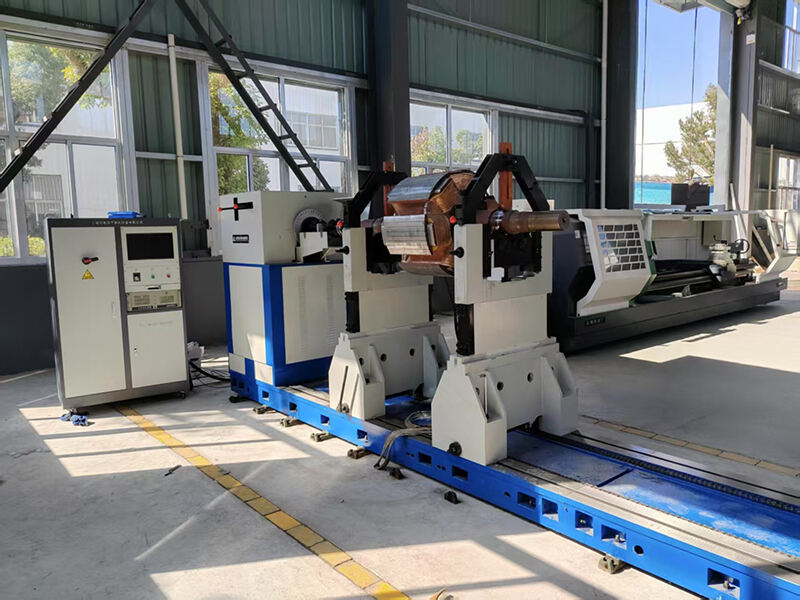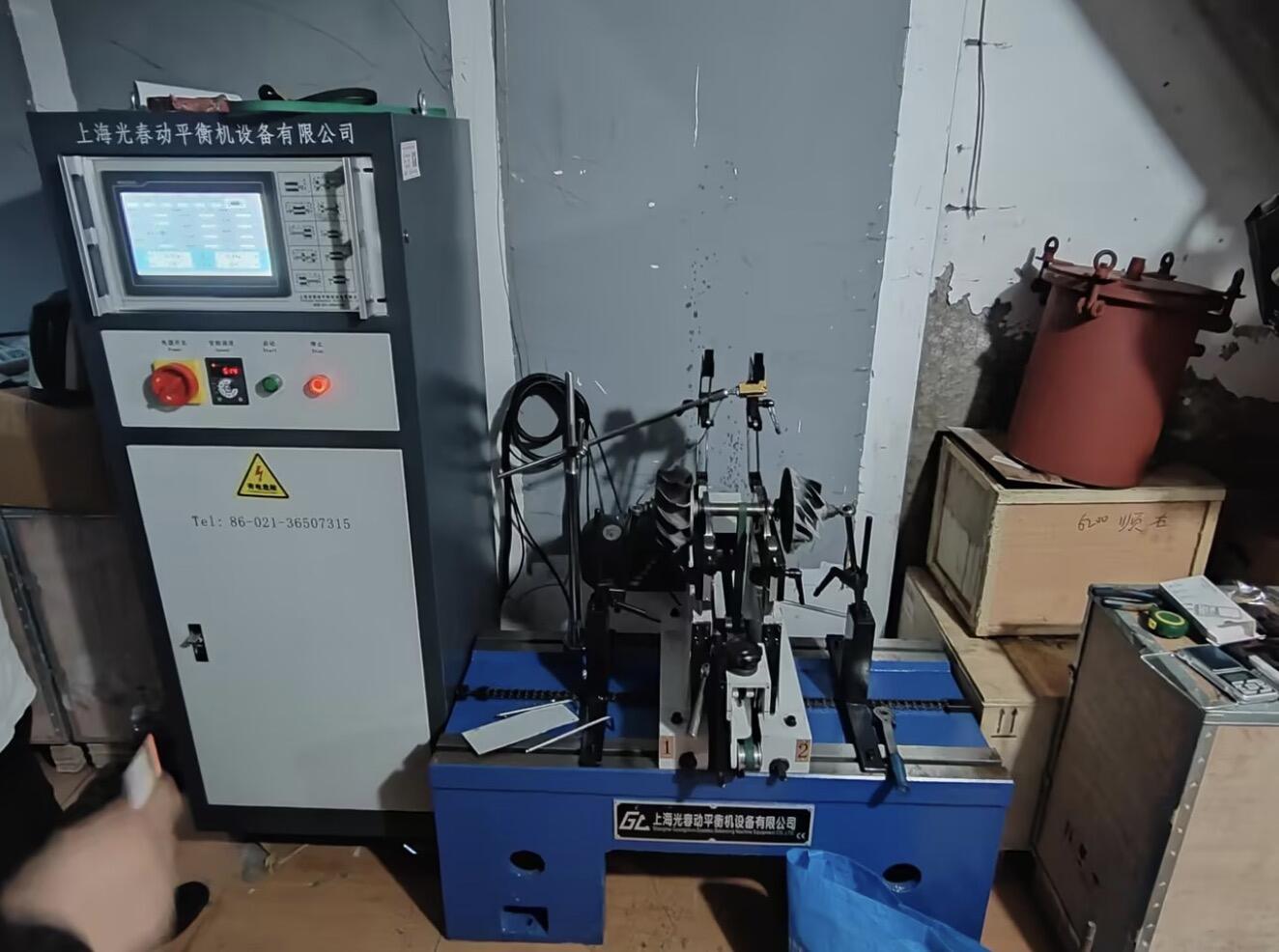Understanding the Critical Role of Balance in Industrial Equipment
In the world of industrial machinery and equipment, the importance of dynamic balancing cannot be overstated. Every rotating component, from massive turbines to small electric motors, relies on precise balance to operate efficiently and safely. When machinery operates at high speeds, even the smallest imbalance can create significant vibrations, leading to reduced performance, increased energy consumption, and potential catastrophic failures.
Dynamic balancing represents the cornerstone of preventive maintenance and optimal machine operation. It's a sophisticated process that ensures rotating components distribute their weight evenly around their axis of rotation. This critical procedure extends far beyond simple weight distribution – it's about achieving harmony in motion, ensuring every part moves exactly as designed.
The Science Behind Dynamic Balancing
Principles of Rotational Physics
At its core, dynamic balancing works on fundamental principles of physics. When a component rotates, it generates centrifugal forces. If the mass is not distributed evenly, these forces become unbalanced, creating vibration and stress. The magnitude of these forces increases exponentially with speed, making proper balance even more critical in high-speed applications.
Modern dynamic balancing techniques utilize sophisticated equipment to measure these forces with incredible precision. Sensors detect vibration patterns and specialized software analyzes the data to determine exactly where and how much correction is needed. This scientific approach ensures accuracy that would be impossible to achieve through visual inspection or manual methods alone.
Types of Imbalance
Understanding the different types of imbalance is crucial for effective correction. Static imbalance occurs when the center of mass is offset from the rotation axis. Dynamic imbalance involves multiple planes and is more complex, requiring sophisticated correction methods. Coupled imbalance combines both static and dynamic elements, presenting unique challenges for balance technicians.
Each type of imbalance requires specific correction methods and tools. Modern balancing machines can identify and address these various forms of imbalance with remarkable precision, ensuring optimal correction regardless of the complexity of the problem.

Benefits of Professional Dynamic Balancing
Extended Equipment Lifespan
Perhaps the most significant advantage of proper dynamic balancing is the dramatic extension of equipment life. Balanced machinery experiences less wear on bearings, seals, and other critical components. This reduction in stress can double or even triple the operational life of expensive industrial equipment, providing substantial return on investment.
Regular balancing as part of preventive maintenance helps identify potential issues before they become serious problems. This proactive approach prevents unexpected breakdowns and extends the intervals between major repairs, resulting in significant cost savings over the equipment's lifetime.
Energy Efficiency Improvements
Properly balanced equipment requires less energy to operate. When rotating components are perfectly balanced, they encounter minimal resistance and require less power to maintain their intended speed. This efficiency translates directly to lower energy costs and reduced carbon footprint for industrial operations.
Studies have shown that imbalanced equipment can consume up to 30% more energy than necessary. Through professional dynamic balancing, organizations can achieve substantial energy savings while simultaneously improving their environmental performance.
Implementation Strategies for Effective Balancing
Establishing Maintenance Schedules
Successful dynamic balancing programs require careful planning and consistent execution. Regular monitoring and scheduled maintenance intervals should be established based on equipment type, operating conditions, and manufacturer recommendations. This systematic approach ensures optimal performance while preventing unexpected failures.
Documentation of balancing procedures and results helps track equipment performance over time and identify trends that might indicate developing problems. This historical data becomes invaluable for predictive maintenance and future equipment optimization.
Training and Expertise Requirements
Professional dynamic balancing requires skilled technicians with specialized training. These experts must understand not only the technical aspects of balancing but also the specific requirements of different types of equipment. Ongoing training ensures technicians stay current with the latest technologies and techniques.
Investment in proper training and certification programs pays dividends through improved equipment performance and reduced maintenance costs. Well-trained technicians can quickly identify and correct balance issues, minimizing downtime and maximizing productivity.
Future Trends in Dynamic Balancing Technology
Advanced Monitoring Systems
The future of dynamic balancing is increasingly digital and automated. New sensor technologies and real-time monitoring systems provide continuous feedback on equipment balance conditions. This allows for immediate detection of developing problems and predictive maintenance scheduling.
Integration with industrial IoT platforms enables remote monitoring and analysis of balance conditions across entire facilities. This connectivity provides unprecedented visibility into equipment performance and enables more efficient maintenance planning.
Artificial Intelligence Applications
Machine learning algorithms are revolutionizing the field of dynamic balancing. These systems can analyze vast amounts of performance data to predict potential balance issues before they become serious problems. AI-powered systems can also optimize balancing procedures and recommend precise corrections.
The combination of advanced sensors, real-time monitoring, and artificial intelligence is creating new possibilities for automated balance correction systems. These innovations promise to make dynamic balancing more efficient and effective than ever before.
Frequently Asked Questions
How often should dynamic balancing be performed?
The frequency of dynamic balancing depends on several factors including equipment type, operating speed, and environmental conditions. Generally, critical high-speed equipment should be checked quarterly, while slower-speed machinery might require annual balancing. Regular vibration monitoring can help determine optimal balancing intervals for specific applications.
What are the signs that equipment needs balancing?
Common indicators include increased vibration, unusual noise, excessive bearing wear, reduced performance, and higher energy consumption. Early detection of these symptoms allows for timely correction before serious damage occurs.
Can dynamic balancing be performed on-site?
Yes, many types of dynamic balancing can be performed on-site using portable balancing equipment. However, some specialized applications may require removal of components for balancing in a dedicated facility. The specific requirements depend on the equipment type, size, and operating conditions.




